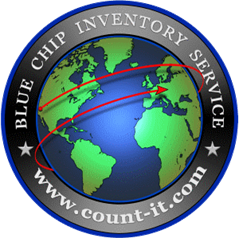
One of the most important components of inventory management is that of valuing the items you have on stock (or in-transit), both for pricing as well as accounting purposes. Not only does this help you manage your cash flow and keep your books balanced, but it also helps you determine how much to charge for your products or materials in order to turn a profit. There are a number of different ways to value inventory from an accounting standpoint. Let’s take a look at a few of them here.
Manual / Standard Cost
This method requires that you manually assign costs to your inventoried items. From a logistical standpoint, this type of valuation strategy can be incredibly tedious and time consuming. It also opens the doors to a greater risk of human errors. Standard costing is especially challenging if you have vendors whose prices change on a regular basis.
Moving Average Cost
This method of inventory valuation involves recalculating your inventory cost after every purchase. The total cost of items purchased is divided by the number of items currently in stock and this number is then used as both your cost of ending inventory as well as your cost of goods sold. Moving average cost can only be used with an inventory tracking system that keeps up-to-date, perpetual records of balances.
FIFO Cost Accounting
The acronym FIFO stands for “First In, First Out,” a method of cost accounting that records the costs of the oldest inventory items first as they are sold. That means your oldest purchasing costs would be used to determine your profit from each sale. So, let’s say you purchased 50 widgets at $2.00 each on 1/1 and then another 50 for $1.75 on 2/1. If you sold all 100 on 3/1, the first 50 would be counted at the $2 cost to determine profit and the balance at $1.75.
LIFO Cost Accounting
With the LIFO (“Last In, First Out”) cost accounting method, your inventory is valued based on the most recent inventory purchases. So, in the above example, the first 50 widgets sold on 3/1 would be valued at the $1.75 cost versus the older ones purchased on 1/1. Many US companies used to prefer this method because it often helped to reduce income tax burdens. With the International Reporting Standards (IFRS) banning this method, however, most organizations have returned to the FIFO tactic.
Not sure which of these inventory valuation methods would be the best fit for your business needs, or need help with other inventory-related issues? Don’t struggle on your own and risk making mistakes that could cost your business dearly in the long run. Contact the professionals at Blue Chip and let us handle all your inventory management needs.


This calculator can help you determine the selling price for your products to achieve a desired profit margin. Try It Free >
Our Audit/Verification Service is available globally - from Thousand Oaks, CA to Timbuktu. Learn More >
Don't just take our word for it. Find out what our clients are saying about our services.
See actual testimonials >
From Retail and Gross Margin Inventory reports, to SKU and Price Verification reports, Blue Chip Inventory provides complete inventory service. See samples >






